This is what LWOP or a Death Sentence sounds like five, twenty, over thirty years in.
Thank you:
Geoff Martin
Phillip Vance Smith, II
Timothy Johnson
Charles Mamou
Terry Robinson
Keith Erickson
Amritraj Athwal
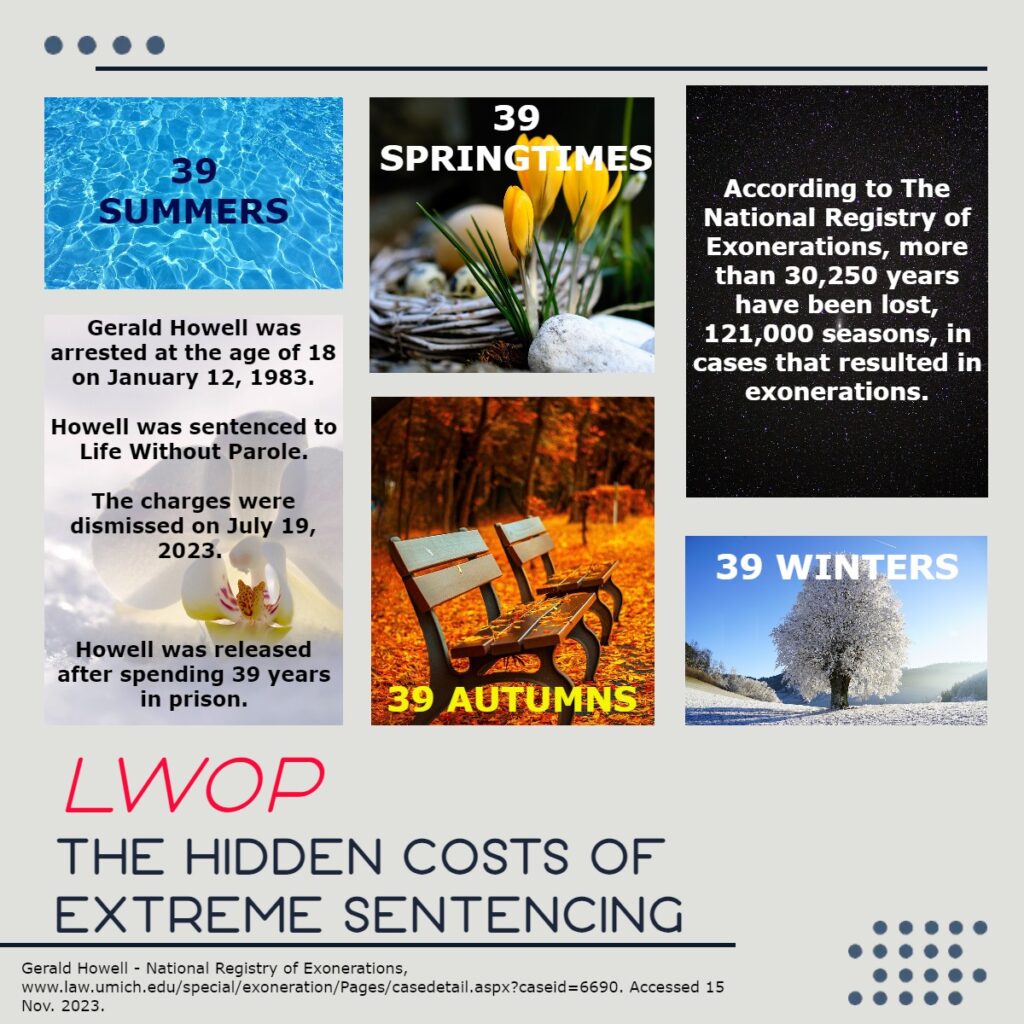
![]()
This is what LWOP or a Death Sentence sounds like five, twenty, over thirty years in.
Thank you:
Geoff Martin
Phillip Vance Smith, II
Timothy Johnson
Charles Mamou
Terry Robinson
Keith Erickson
Amritraj Athwal

![]()
My grandmother died a day after my quick conviction.
“She saw you on TV after you were sentenced to death and she died. You killed her by breaking her heart.”
I got hate mail from my own flesh and blood after my conviction. – Charles Mamou
Charles Mamou’s family was divided, according to Mamou, half quickly disowning him and wishing he were dead.
But, what did they know, really? They knew the same thing I did when I first looked up articles on Charles Mamou, a new writer for WITS, what the prosecution wanted them to know – what the jury, the defense, and the media heard. I read various versions of a brutal, lone murderer who sexually assaulted a girl before killing her in an abandoned house. It wasn’t a wonder he got hate mail. I’d learned to look past the headlines, things not always as they seem.
After reading the transcripts, I got a slightly clearer picture. As the prosecution’s story goes, Charles Mamou went on a killing rampage sparked by a drug deal gone wrong, drove off with the victim, sexually assaulted her, and murdered her in a very hard to find backyard in Houston – a city he didn’t live in. All the other individuals involved in the drug deal, all residents of Houston, slept after the initial drug deal and knew nothing, a couple of them testifying for the state…
So – I looked even closer. If it were a card game, there would be money on the table, not a life, and some would say the deck was ‘stacked’. It turns out, the state had information that not only could have supported Charles Mamou’s claims of innocence, but the information could have also led to finding out what really took place that night. Evidence that existed all along and more recent interviews reveal a few things. The state had a list of phone calls that were made that night. All of the callers in those records, the individuals involved in the drug deal, from the ‘cooker’, to the driver, to the introducer, were not sleeping that night according to their phones. Not only that, recent interviews put them all in the parking lot of Howard Scott’s apartment that night, along with Charles Mamou – who was supposed to be off on a lone sexual assault and murder. If Charles Mamou was in the parking lot along with the car he was driving – so was the victim. Which is what Charles Mamou has always asserted – that he fled the drug deal gone wrong and drove back to Howard Scott’s apartment complex.
In the absence of shared information, the existing phone records, witnesses were not called to testify, and those who were called testified they were sleeping – even though the state knew their phones were in use. Does an attorney have an obligation to bring it to the attention of the court or his witness when they are not telling the truth and the attorney is aware of it?
Phone calls that should have been traced, never were – no one will ever know where the calls were placed from. They could have been dialed from the backyard where the body was found. They could have been placed from anywhere in Texas. The calls would have certainly helped determine what happened that night. The callers never had to answer questions about where they were when they placed the calls. The owner of the phone line they called – never had to explain who was calling and what they said. The man whose phone was receiving the calls testified for the state, saying he was asleep and his phone was not ringing. Regardless of records indicating that was not true, the state’s witness was never corrected by the prosecutor. No one questioned why his phone was ringing until 3:43 a.m. the night the victim was murdered and why one phone call went out at 3:59 a.m. requesting a cab – yet the state had information these calls took place.
One of the callers to the home did the same, testifying for the state and saying he went home to bed that night and didn’t use his phone. The witness and driver in the drug deal did not have to explain why his cell phone dialed Howard Scott’s apartment at 2:37 a.m. or where he was at when the call was made. Rather, he testified he had went to bed.
The other callers on the record never even had to step foot in a courtroom. They were never called by either side. But, all the callers were up and about that night, not sleeping, and witnesses have since said they saw all the callers in one parking lot that night – Howard Scott’s parking lot.
It isn’t surprising the jury came back with a guilty verdict, no more surprising than it would be in a poker game with no aces in the cards dealt to the other players, but rather held in the dealer’s hand. Charles Mamou certainly looked the part, he was a drug dealer. Just in case though, they hung on to one more card. The sexual assault. While fighting for the death penalty, the prosecution called him ‘vicious’, ‘ruthless’, and ‘cold-blooded’. The jury was told he ‘devastated and destroyed’, that he ‘marches her to the back, and he makes her commit oral sodomy, makes her suck his penis. Imagine that, ladies and gentleman’.
While saying those words to the jury the prosecution knew not only about the phone records that could have been used to defend Mamou, they also knew something else. There was a rape kit collected from the body along with trace evidence, and that kit was collected by the medical examiner who did not make one note of it in his autopsy report. He also did not breathe one word of it in his testimony. The prosecutor’s office not only knew about the collection of the evidence, they requested that it be processed and they had received the results. The results indicated there was ‘no semen found’. In addition to that, trace evidence was collected that Mamou never knew about. For two decades – he never knew. Neither did the jury, or his family, or the victim’s family.
There is no nice way to say it. The state had information that not only could have supported Charles Mamou’s claims of innocence, but the information could have also led to finding out what happened that night. Evidence and interviews that have since taken place tell us a few things. All of the callers in those records were not sleeping that night. Recent interviews put them all in the parking lot of Howard Scott’s apartment, along with Charles Mamou – who was supposed to be off on a lone sexual assault and murder. Involved parties, according to the phone records, were not called to testify, and those who did testified they were sleeping – regardless of what the state knew.
Charles Mamou absorbed the anger for the loss of his grandmother. He had no other choice. Since his conviction, he has been living in a 9 x 6 cell in solitary confinement. No one sees his tears. No one can measure his depression. People have moved on with their lives, his children have been raised, his grandchildren don’t know him. As it stands now, he will be executed. His appeals are exhausted, he is waiting on a date, and if his parents are still alive when it comes, they will watch their son be belted down to a table as poison gets pumped into his veins and he takes his final breath. Is that the justice we should be shooting for?
Many anti-death penalty activists find their stance not because they are necessarily opposed to the death penalty. They base their stance on the knowledge the deck sometimes gets stacked. Not every prosecutor is as interested in finding out exactly what happened as they are in securing a win. If anyone wanted to know what happened to the victim twenty years ago, those phone calls would have been traced. The individuals making the calls would have been interviewed, their stories documented, statements taken and compared. It defies logic to even try and argue differently, to suggest those individuals not be interviewed and those calls not be traced. A girl was murdered – every stone should have been turned over to find out what happened. Instead – nothing. There is not one recorded interview with two of those callers that night, both of whom are said to have been in the parking lot, and one of who’s name is recorded as being the caller for a cab from Howard Scott’s apartment at 3:59 a.m. Yet – not one interview with him or the other individual calling the apartment and seen in the parking lot that night. As a matter of fact, Howard Scott’s first interview with police that was performed on the first day he was transported to HPD – is not in any file. It does not exist. I was told, “Not everything makes it into the file.”
What could have been discovered if, in 1999, this case had been investigated and the phone records and physical evidence shared? Where were the phone calls made from? What would the callers have said about what they were doing that night had they been asked? What would the recipient of the phone calls have said if he had been confronted with the question, rather than allowed to say – ‘I was sleeping’?
The window of opportunity on what could have been determined is shut. The Harris County prosecutor’s office did that, not Charles Mamou. The deck was stacked against Mamou, the victim’s family, Mamou’s family, the jury, and anyone who has ever read the story. Everybody loses. The prosecution may have felt not sharing the information they had would secure a ‘win’ for their office, but how is that winning? You can’t win when you cheat, it’s a façade, a farce. One person does not get to decide what part of the puzzle we can use. To argue a case in a court of law, what people look towards for truth, justice, equality and fairness, while keeping information to yourself, and not only doing that but also exploiting the lack of knowledge and arguing scenarios such as witnesses sleeping and sexual assault – that is not a win.
There is also a facebook page dedicated to sharing Charles Mamou’s troubling case.
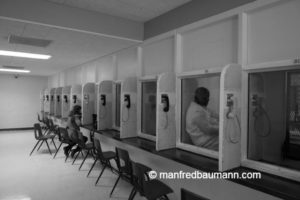
All Photos, courtesy of ©manfredbaumann.com
TO CONTACT CHARLES MAMOU:
Charles Mamou #999333
Polunsky Unit 12-CD-53
3872 South FM 350
Livingston, TX 77351
You can also reach him through jpay.com.
SIGN HIS PETITION – LEARN ABOUT HIS CASE. Charles Mamou is a long time WITS writer. He is part of our writing family and his case has been studied and shared here for a couple years. Please sign a petition requesting that his case be truly investigated – for the first time. If you learn enough about his case, you will likely agree, there was not much done in the way of investigation. What we have been able to learn, supports that. Please sign.
![]()
Growing up in Detroit on Brady & Hastings in a once vibrant and bustling neighborhood where blacks owned several businesses and created jobs and livelihoods for many who resided there, Leonard aka Leanbone – a nickname given to him by his uncle due to his skinny frame – learned early on how to survive by adapting and finding ways to cope with the many challenges he faced. It was during those years, he experienced his own personal trauma as well as witnessing police brutality. Those experiences led him down a road of dysfunction, despair and destruction. Leonard shared with me how his nearly fifty year incarceration has taken its toll on his health. He now battles cancer, requires a cane in order to get around and has a prisoner assistant help him with his meals and other necessities.
Leonard attributes the path he chose in good part to bad choices and poor decision-making, which led him to a life of crime that ultimately resulted in a man losing his life during a stick-up attempt. Leonard expresses regret and remorse for the harm he caused the victim, their family, his family, the black community and society as a whole because that’s who was impacted by his reckless and out-of-control behavior.
This writer can relate to Leonard and the harm he caused because I am also responsible for a young black man losing his life to an act of senseless violence. It’s sad that we didn’t value the life of another human-being and acted so impulsively. However, men like Leonard Bradford-Bey, who is now almost 70 years-old, realize the devastation of past criminal behavior. He strives relentlessly to deter the same behavior in younger men and has become a well-known mentor and example that others can follow despite being behind bars. Even so, as I peer into Leonard’s eyes, I see agony and shame for past deeds.
Leonard’s health is rapidly deteriorating, and at this point, with the life expectancy of a black man, he is living on what we call ‘borrowed time’. The stress of having to deal with cancer and not receiving adequate healthcare can lead to more health issues. I have been around Leonard for the past 35 years or more and watched him go from an athletically-inclined, able-bodied individual, to that of a nearly handicapped man in need of constant assistance to get around on a daily basis. It saddens my heart and pulls at the core of my soul to see my friend become slowly debilitated before my eyes. If punishing offenders for crimes they’ve been convicted of includes this form of torturous madness, having them deal with life ending illnesses like cancer, heart disease, and kidney failure behind these bars – then I must ask… At what point is prolonged incarceration enough, especially if its met the threshold of its intended penological purpose? In other words, if the punitive and retributive aspects have been reached, why not then focus on the rehabilitative and transformative aspects of an individual’s growth and maturation out of criminality? Leonard has evolved and worked for his transformation, even earning a one year certificate towards his Associates Degree.
Over the last four decades, I’ve had to witness countless folks like Leonard suffer and wither away to near nothingness. The reality of it hits home because I can honestly put myself in Leonard’s shoes as I am approaching the same age bracket and have serious health concerns as well. I realize that many of us have committed terrible acts of violence, and people have lost their lives. However many of us, like Leonard, have shown and genuinely expressed our remorse and sorrow, shown sincere empathy, and taken full responsibility for our actions which led up to the crime and the offense itself.
In the early ’80s I was housed at Marquette Branch Prison, an old prison known for its vicious and volatile violence and stark similarities and resemblance to Alcatraz because it sits less than 50 yards off Lake Superior. One day a prisoner was aggressively harassing a young female prison guard who was terrified. Leonard happened to walk up and see the fear in the guard’s eyes and the danger she was in. He immediately intervened and saved her from harm. He didn’t consider the harm he was putting himself in, but that was Bradford-Bey for you. He wasn’t little Leanbone anymore, he was 6 foot tall and 260 lbs. – Grandman. He transitioned from being known as Leanbone to Grandman because he became a political activist and spiritual leader. He was a straight up cat, who didn’t particularly like to see anyone taken advantage of. I believe in my heart that if Leonard was to be released tomorrow, he could contribute something good to his community. If you were to talk with anyone here in the Michigan Prison System, I have no doubt whatsoever they would agree with me that he is the last of the Mohicans and surely a soul worth saving from this madness of prolonged unnecessary incarceration and the physical and mental suffering he deals with everyday. I pray the day comes they release Leonard and let him live the remaining days of his life on the other side of the gate.
Dedicated to Leonard ‘Grandman’ Bradford-Bey – From One Soul Brother to Another.
ABOUT THE WRITER. Ricardo Ferrell sent in the last entry recieved in a recent writing contest. I had never seen his writing before his essay arrived. Although the combined judges’ scores didn’t result in his placing in the top three – his essay got my vote for first place. He wrote with heart and compassion, which is exactly what this site is about. He became an advocate. Mr. Ferrell sent in an essay that was exactly what I was looking for when I started this contest – and he is my Honorable Mention choice. Ricardo Ferrell can be contacted at:
Ricardo Ferrell #140701
Gus Harrison Correctional Facility
2727 E. Beecher Street
Adrian, MI 49221
![]()
Effective August 8, 2019, Walk In Those Shoes officially became a corporation with public charity status. Who knew this is where the path that was cleared would lead?
The purpose of Walk In Those Shoes has always been to bring about more understanding and compassion through writing, sharing not only stories but HOW people arrived in their stories. There are crimes that may never be understood, and there are just as many that could have been predicted by an individual’s life experiences from birth – whether a lack of resources, or love, or having role models who achieved success and the ability to feed their families through crime.
Walk In Those Shoes combines the magic of healing through writing and the true life experiences of those in prison – with the goal of growing compassion. The end goal is a desire for change in this overly incarcerated country, not only within prisons themselves but also in the unbalanced scales of justice. We can come up with solutions, and one part of that is understanding that a prison sentence is not the definition of a person.
Over the years, positive feedback has outweighed negative by far, although there are, on occasion, voices who object to those in prison having a literary outlet or advocacy. To that, I say – there is no mistake in loving and caring and speaking up for others. All comments are welcome, within the bounds of civility, but negative comments won’t stop the compassion and advocacy that happens here because there is no mistake in caring about people.
With that said – it’s time for another writing contest. Only those who are incarcerated are eligible to participate. The theme? SOMEONE ELSE’S SHOES.
Become an advocate. Plead someone else’s case. It doesn’t need to be a ‘legal’ argument, the rules are flexible. Tell us about someone you know who deserves another chance at freedom, or medical care they are not getting, or to be released from solitary confinement. Tell us about a ‘good soul’ that has always had the chips stacked against him or her. You might have to talk to them about their childhood – find out their story. Or you may already know it. Or – your piece might not touch on their background at all. You make the rules – but speak up for someone in a way that makes people feel compassion. Nicknames are welcome, but if you use their full name – get their permission to write about them, and if they choose you can include their contact information.
However you want to go about it – help us to feel someone else’s suffering, to walk in their shoes. In 1,000 words or less – show love and compassion through your writing about – someone else. Submissions can be handwritten.
As done in our previous contest, I will narrow down the entries to the top ten, and then hand them off to individuals to rate the writing with a point system to determine winners.
PRIZES: It became apparent in the previous contest we needed more than one prize.
First Place: $75
Second Place: $50
Third Place: $25
DEADLINE: December 31, 2019. Decisions will be posted on or before February 10, 2020.
COST OF ENTRY: Entry is free, but entry will be considered permission for posting on the blog and for editing – regardless of whether or not the entry wins. If the last contest is any indication, we recieved a lot of writing we wanted to share, even if they all didn’t win.
Please don’t submit previously published material.
MAILING ADDRESS:
Walk In Those Shoes
Writing Contest Entry
P.O. Box 70092
Henrico, Virginia 23255
![]()
In 1999 Wayne Hill, Charles Mamou’s court appointed defense attorney, thanked Mamou’s mother, Angelice, when she handed him a letter he could use to defend his client. Mamou was facing the death penalty, in a case centered on a ‘confession’ to murder. A confession Mamou said never happened. His defense attorney held in his hands a letter written by the man claiming to have heard the ‘confession’, Terrence Dodson. In the letter written to Mamou, Dodson wrote, “I’m glad you didn’t tell me shit about that cause I don’t wanna know shit, I feel better off that way.”
In addition to the letter, Wayne Hill had access to Dodson’s video statement. Police paid Terrence Dodson a visit early in the investigation when they were looking at him for his involvement in the murder. At that time, he made a video statement claiming Mamou confessed to him. Hill had access to that video, and if he watched it, he would have known all the contradictions between Dodson’s statement and his actual testimony in court.
One of the most significant contradictions was how and when the alleged ‘confession’ took place. According to Dodson’s video statement, Mamou called him on Tuesday morning from Louisiana – even though Mamou wasn’t even in Louisiana on Tuesday morning – and confessed in a single telephone conversation. Yet on the stand, Dodson said Mamou began the confession in Texas, face to face, on Dodson’s sister’s porch. He then went on to say that the confession continued over a ‘couple days’ in ‘several’ conversations. That wasn’t the only contradiction Dodson made, there were several.
Wayne Hill, the defense attorney, never entered the letter Dodson wrote as an exhibit for his client’s trial. He never mentioned the letter, nor did he mention Terrence Dodson’s many contradictions of his own video statement.
Terrence Dodson is Charles Mamou’s cousin. The prosecution used that relationship to solidify their argument of guilt, pointing out that Mamou must be guilty if his own family would testify against him.
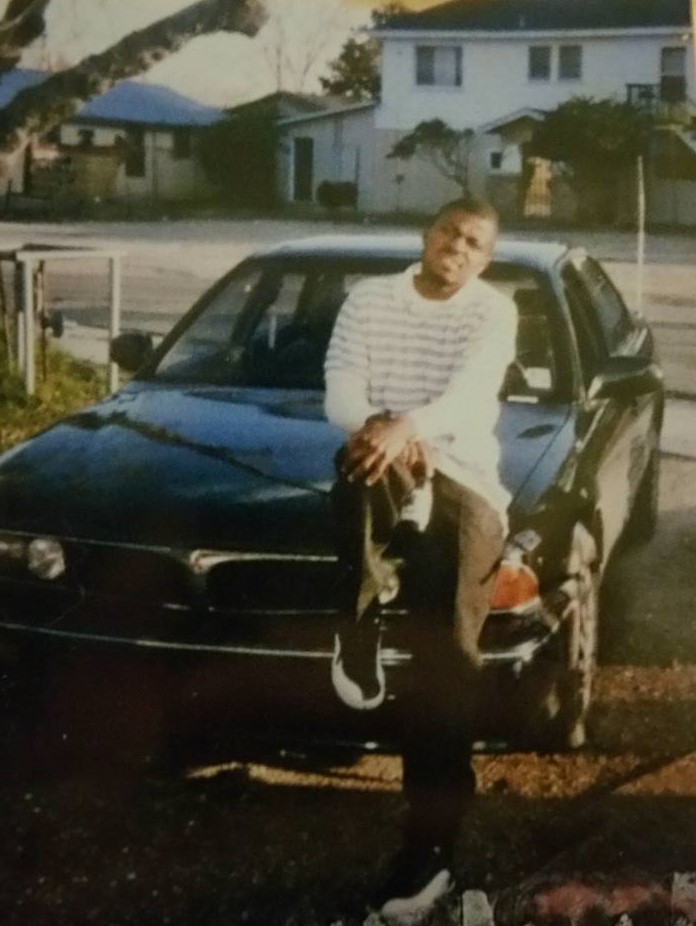
They wanted another cousin of Mamou’s to testify as well. That would make the ‘relative’ argument stronger. The only problem with the other cousin, Anthony Trail, was, he didn’t know anything about the night in question. He wasn’t there, and no one had told him anything about what had happened to the victim. He had no desire to get involved because he didn’t have any relevant information to add. The prosecution wanted him involved though. At one point, while being questioned, he had decided he would not testify. Then a man came into the room. According to Trail, he believed the man was the victim’s father, and that was the impression he was given. The man proceeded to persuade Trail to get involved and eventually Trail agreed to testify. We will probably never know if it was actually the victim’s father who persuaded him or someone that was just trying to give that impression. Trail’s testimony added nothing material to the trial because Trail had no knowledge of what happened that night nor had anyone shared with him a ‘confession’. The prosecution didn’t ask him those things on the stand, but rather used him as another ‘family member’ who testified against Mamou. They asked Trail about some sunglasses Mamou and he had picked up the day after the murder, leaving the impression the glasses were some type of evidence, but it was never pointed out for the jury by the prosecution – or defense – that the glasses they picked up were nearly five miles from the crime scene.
Throughout the Mamou trial a sexual assault was repeatedly referred to for the majority female jury. Although it was presented as important in the courtroom, outside of the courtroom there was no urgency to find out if any sexual assault actually occurred that night. Dr. Joyce Carter ordered a rape kit to be done when the body was found, to include oral swabs, fibers, clothing, fingernail scrapings, etc. On December 11, 1998, those items were picked up by an HPD officer and placed in the HPD property room freezer. There they sat. The rape kit was not ordered to be processed until long after Charles Mamou was in custody. Eight months after the crime, on July 8, 1999, and shortly before Mamou’s trial the D.A.’s office requested the rape kit be processed by the HPD crime lab. The results – no semen was detected on any items analyzed.
Although the District Attorney’s office ordered the test processed and was given the results, graphic references to sexual assault were repeatedly used throughout the trial, in what appeared to be an effort to inflame the jury – although Mamou was never charged with sexual assault. There was never any evidence a sexual assault took place by anyone, according to the incident report.
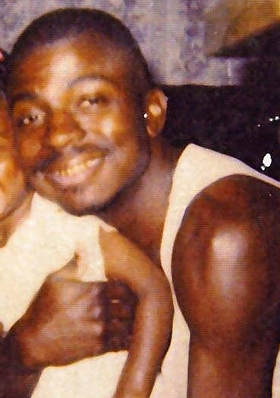
Mamou’s defense team left the sexual assault accusations without argument, never telling the jury that a rape kit was processed months after the crime that turned up nothing.
Also of note, ‘hairs were collected from the t-shirt’ of the victim. The hairs were never mentioned by the prosecution or the defense. It appears they are still in the HPD property room.
Charles Mamou always maintained his innocence, and the only witness statements available support his account of his whereabouts that night, although a couple statements appear to be currently missing as of an Open Records Request done this year. What is known is – the victim and Charles Mamou were both on Lantern Point Drive at approximately 12:00 midnight on the night of December 6, 1998. On that point, all accounts are in agreement. After a drug deal gone wrong, Mamou and Samuel Johnson drove away in two separate cars, with the victim in the backseat of the car Mamou was driving.
Charles Mamou says both men drove to an apartment complex on Fondren where he was staying while he was in Houston – about a ten mile drive. That is also the location where Johnson lived.
A witness statement taken from the woman who lived at the apartment where Mamou stayed that night indicates Mamou was back at her apartment at approximately 12:45. In her statement she spoke of waking up at “about 12:15 AM.” She then says, “It seem like was around thirty minutes later I heard a knock on the door.” She goes on to say, “I asked my brother who was at the door. He told me it was Chucky.”
That statement indicates that Mamou was exactly where he said he was forty-five minutes later. Unfortunately – the jury never knew that statement existed and that information was never presented to them by Mamou’s defense team.
During the trial the woman’s husband, Howard Scott, testified and when questioned he was shown his own statement, “when you say Mr. Mamou got there, does reviewing that statement specifically refresh your memory that it was 12:15 and 12:45?”
Scott’s answer, “Yes.”
Question, “Okay. So you’re positive it couldn’t have been later than 12:45?”
And the answer, “No, sir.”
Two witnesses who had no reason to defend or support Charles Mamou both supported exactly what Mamou said happened. The body of the victim was found on Lynchester Drive, a location that was about thirty minutes from the Lantern Point Drive location where the drug deal gone wrong took place. The prosecution’s version of a sexual assault, murder, and dropping sunglasses at a location on Ashford Point Drive – couldn’t have been done in 45 minutes. The time constraints were never outlined for the jury.
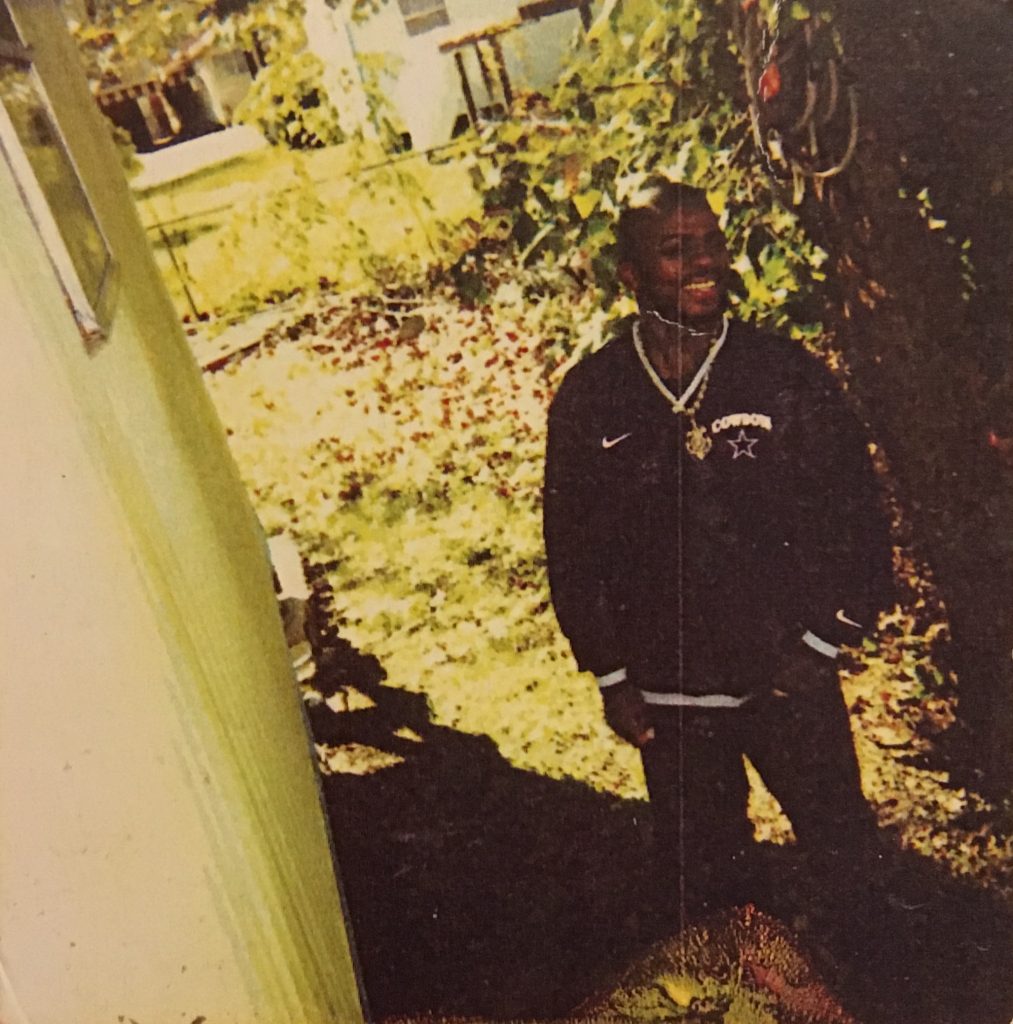
There is something else very troubling about Howard Scott’s testimony. The statement he was shown while on the witness stand – is not in the case file as of the recent Records Request.
Howard Scott made two statements to police – one on Tuesday, December 8, and one on Wednesday, December 9. The incident report, received through an Open Records Request only includes one statement. The Incident Report refers to the ‘missing’ statement on December 8, “It was then decided to bring Howard Scott to the homicide office to be interviewed there since there were some discrepancies between his story and Robin’s. Officer Hollins then transported Howard Scott to the homicide office where he was interviewed by Sergeant Novak.” This interview is not in the incident file that was received pursuant to the Open Records Request.
The missing interview is mentioned more than once. It is also referred to later in the incident report, stating that at 9:45 on Wednesday, December 9, Sergeants Yanchak and Ferguson went to pick up Robin and Howard Scott to be ‘re-interviewed’.
It is referred to again, “On this date, Sergeant Yanchack and Sergeant Ferguson assisted Sergeant G.J. Novak and Officer H.F. Chisolm in the follow up investigation into this offense. Earlier this date, we had ‘re-interviewed’ two witnesses named Robin Marie Scott and her husband, Howard Scott.”
Even on Page 3 of Howard Scott’s statement taken on Wednesday, December 9, 1998, he refers to the interview the day before, on Tuesday, December 8, 1998, “Around 11:30 AM two detectives showed up and began asking me about Chucky. I told them that Chucky left earlier and gave them permission to search my house. I later came with them to the homicide division.”
But, Howard Scott’s first statement did at one time exist and was also referred to in the court transcripts when Wayne Hill asked Scott to look at it and refresh his memory. The second statement of Howard Scott’s makes no reference to when Mamou arrived back at his apartment, so the statement referred to in court is the one that is now currently missing from the file.
There are other things that appear to be missing from the file, unless the detectives did not document their work. According to a News Release put out by the Houston Police Department shortly after the crime, “A second suspect drove away in what was initially described as a red Dodge Intreped. It has since been determined the vehicle was an orange Dodge Concorde that was recovered and inspected.” The news release referred to the vehicle that Samuel Johnson was driving that night.
During the trial Johnson was specifically asked about that car. “Did the police then examine your car?”
Johnson, “They examined it a couple of days after I got out of jail.”
Although there are photographs of the vehicle in the file, there is no written report or documentation regarding what was found in the vehicle.
According to Samuel Johnson, a resident of Houston as well as an employee of Orkin at the time, he went home after the drug deal, drank a soda, took a shower and went to bed, not even disturbing his wife to tell her of his involvement in a shoot out on a dark alley. And there is no documentation other than photographs of anything that was discovered inside of the vehicle he was driving.
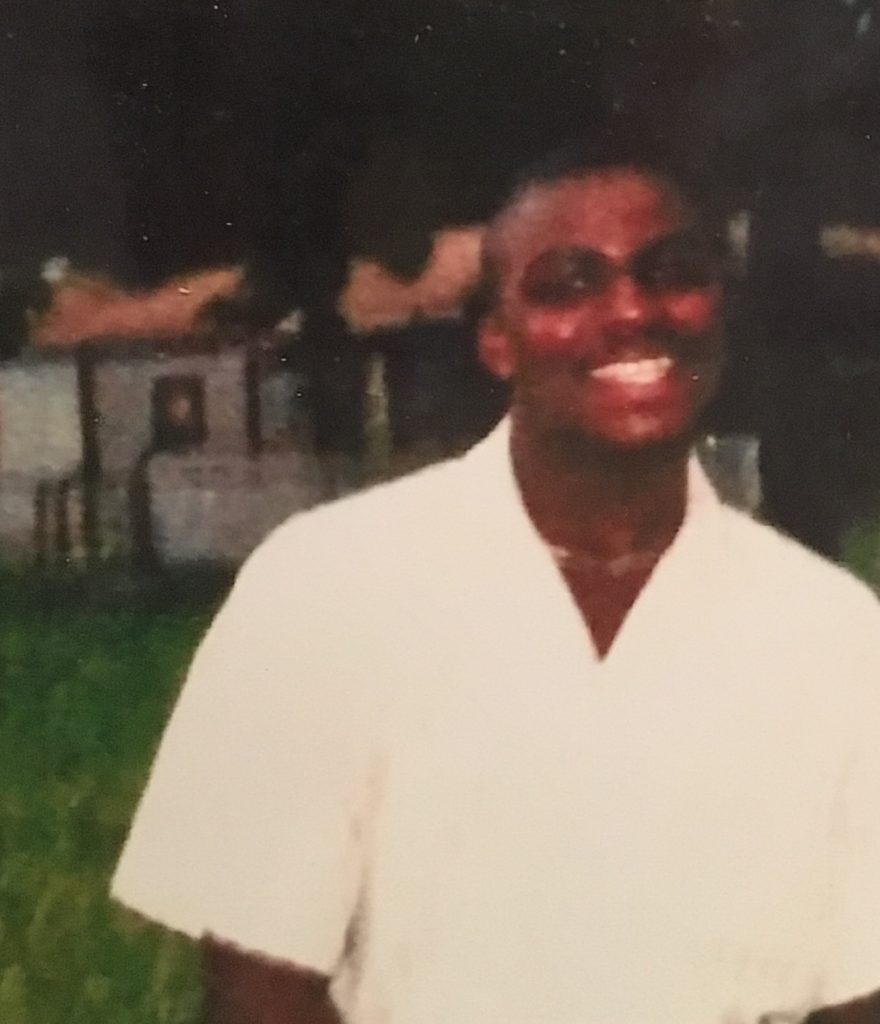
Other documentation not included in the file are any notes or statements made by other parties located at the apartment complex that night, including interviews of Shawn Eaglin. Eaglin was an integral part of introducing several of the parties according to statements, and the police spoke to him. But there are no statements or interview notes in the file regarding interviews of him. As with the vehicle documentation, there is no way to know if the detectives chose not to document their work or if the documents have been removed from the file. But, according to Robin Scott’s statement, she discussed with Eaglin the homicide division going to her home, Shawn’s home, and the employer of Shawn’s cousin, ‘Ced’.
According to Robin Scott’s and Howard Scott’s statements, Eaglin was at the apartment complex on the night in question and it would be expected that detectives spoke to him. Unfortunately, there is no record of those conversations.
In addition to the impossibility of the 45 minute window of time – it is highly unlikely Mamou could have located the backyard of the house for sale on Lynchester Drive where the body was found. He was from Louisiana, and not a resident of Houston. In the Houston Police Department’s incident report, the location was described by a detectives as follows, “The 9200 block of Lynchester Street is located in the Keagan’s Woods sub-division located on the south side of the 14000 block of Bissonnet Street in Harris County. The Keegan’s Woods subdivision is best accessed by turning south onto Bering Wood Street and continuing south to Plantation Valley and then turning west on Plantation Valley. Lynchester Street intersects with Plantation Valley. Lynchester Street does not intersect with Bissonnet and is a difficult street to locate.” That is how a HPD detective described the location, and an investigator recently told me she had difficulty locating it, even with her GPS.
The ability of Charles Mamou, a resident of Louisiana, to have found the location was never brought up by Mamou’s defense attorney for the jury.
For whatever reason, Charles Mamou’s defense team did not present most of the above information. The jury wasn’t left with a lot to consider regarding Mamou’s innocence. As unusual as this may sound – they were given a lot more than in a typical trial. The jury was shown autopsy photos and heard painful, heart wrenching testimony from family members of victims of crimes Mamou was never charged with. As unbelievable as that may sound – it happened. Mamou’s mother, Angelice, was on the elevator with some jurors when she heard them discussing how they were going to decide. It was agreed by the jurors she overheard that they would, ‘vote with the majority’. Ms. Mamou reported what she overheard at the time it happened, but nothing came of it.
They say truth is stranger than fiction. Charles Mamou has been in prison for twenty years, most of it in solitary confinement on death row. Blind faith in the courts is often misplaced. According to the National Registry of Exonerations, the number of exonerations is currently at 2,488. It would be a good bet that a state such as Texas, that executes numerous people a year – has executed innocent people. If the witnesses are to be believed in the Mamou case, there will be one more when he is executed. He couldn’t have done the things he will die for in the time allotted for him to do it. There is not one shred of physical evidence putting him at the scene of the crime. There is not a weapon to test. There is not a footprint at the scene. There is not a fingerprint at the scene. The jury was shown photographs and heard testimony from crimes Mamou was never charged with. Mamou was portrayed as having sexually assaulted someone without a shred of evidence and his attorney did not point that out. There was substantial evidence to call into question the testimony of the key witness who said Mamou confessed, that was never presented by the defense. There are ‘hairs’ that no one seems concerned to follow up on. There was no independent lab testing ever done by the defense. There is documentation that was either never filed or is no longer accounted for – in addition to a statement that at one time existed – but seems to have disappeared.
It reminds me of something I heard recently – close only counts in horseshoes and hand grenades. Can we add ‘or in a courtroom’ with a public defender, the wrong skin color, the wrong year, the wrong state…
Anyone with information regarding this case can contact me at kimberleycarter@verizon.net. Anything you share with me will be confidential.
TO CONTACT CHARLES MAMOU:
Charles Mamou #999333
Polunsky Unit 12-CD-53
3872 South FM 350
Livingston, TX 77351
![]()
Robert Booker isn’t just any author of seven urban fiction novels. He’s bigger than that. He’s a symbol what can happen if we acknowledge the justice system is flawed, and we can do better.

I wrote about Booker in February, 2016, because he once had a life sentence with no possibility of parole – for a nonviolent crime. I sent him a copy of what I posted. He wrote back. The next thing I knew, he was publishing novels – six in the short time I’ve known him, with countless others yet to be published. He accomplished what many writers dream about with only a pencil and paper. And he did it, not expecting to get out any time soon.
Robert Booker isn’t an incarcerated author anymore. He’s a free author. He once inspired me to write about his unjust sentence – he now inspires me to write about what can happen when wrongs are made right. There is only one Robert Booker, as he would tell you, but there are others like him who deserve this same kind of chance.
Robert Booker went to prison June 29, 1994, but this week – he’s the picture of righting wrongs. He’s the picture of a man who is free thanks in good part to a commutation from President Obama and also the First Step Act.
I can’t wait to see what he does next, and I know I will return to this page often – just to watch this and remember what we’re doing right.
Robert Booker’s books can be found HERE.
![]()
My Best Friends Are Behind Bars – that’s going to be the title of my book someday. And some of them are innocent…
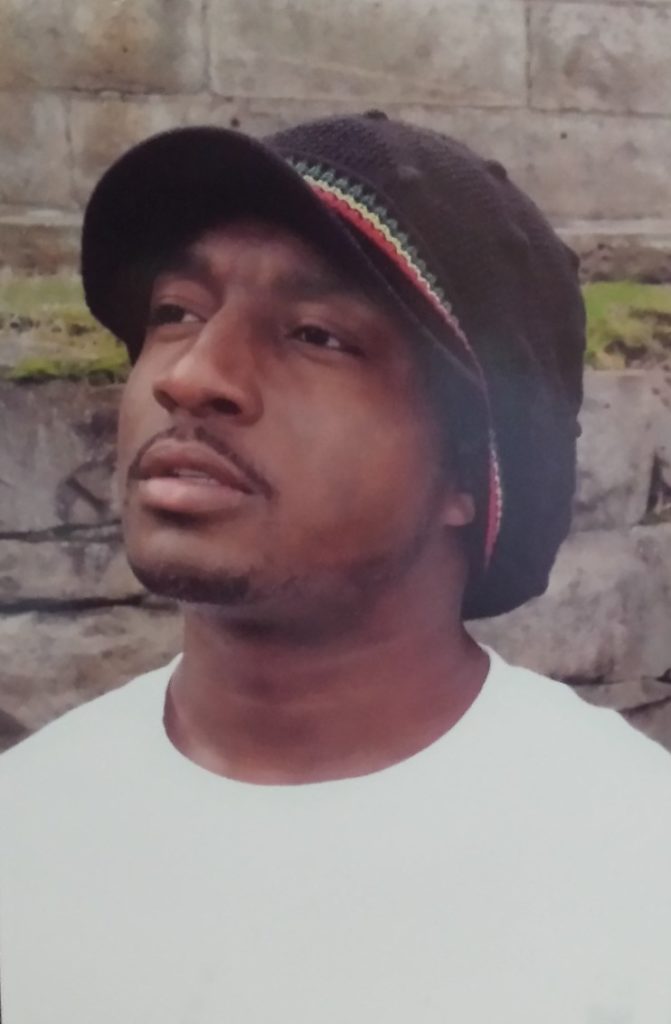
I’m not naïve. I work with a lot of people who have done a lot of bad things. They live with regret. Most of them did ‘something’. People get exonerated all the time though, and statistically, it was bound to happen – I would find myself working with some innocent people. What’s fascinating – my innocent friends didn’t tell me they were innocent. Our writing relationships were the focus, but when my instincts tell me something doesn’t add up, I want to know more.
This week I heard the federal government was going to resume executing people. That news hurt my heart. An attorney once told me during a discussion about the flaws in the system, justice is like the highway. People want to have highways even if they result in lives lost in auto accidents. She explained it’s the same with justice. People are willing to have our system of control, even if we lose some people to the ‘mistakes’. Collateral damage.
I don’t see it that way – there’s no arguable need for the death penalty. Every state, every country, that executes – executes the innocent as well as the guilty. That’s just a fact. Is a ‘tough on crime’ stance worth the mistakes when the mistakes are human lives?
One of my favorite writers, Terry Robinson, lives on Death Row. He’s never written about being innocent. After I came to realize he wasn’t capable of what he was there for, I asked him why he didn’t openly speak of it. He told me he felt it would be disrespectful to the victim of the crime he was incarcerated for to write about that. That’s the type of man he is. He has such a quiet dignity and respect for others, I can think of no one who compares.
It’s because of that character I asked to see his transcripts. I got some clarity as I read. He was no angel, and he has never claimed to be. But the core of who he is was always there. The night of the crime, Mr. Robinson was ‘in the area’. He was black. Another individual who was arrested in connection to the murder said Mr. Robinson did it. That’s all it took. That individual is now living a free life.
When it came time for Mr. Robinson to present his defense, I was anxious to read that portion of the transcripts. I had read everything the prosecution laid out, and I thought there was a lot left unknown – not to mention DNA that wasn’t tied to anyone. I was anxious to hear what would be revealed during the next portion of the trial. I pictured myself, facing a death sentence, and how I would present everything possible, how I could call into question so many things that had been shared. He would surely tell of where he was and who he was with. He would contradict the key witness. After all – it was a trial that could result in a death sentence.
What I read next, stunned me. “Judge, we have consulted with the defendant, and it’s his choice not to present evidence at this time.”
I had to reread it…
What?
The next time I spoke to Mr. Robinson, I asked, “So… You didn’t present any defense. Am I to understand that correctly? Why?”
He explained to me how his attorneys told him that if he defended himself it would make him look guilty – so the defense presented nothing.
What has me scratching my head in confusion will have him executed.
Terry Robinson was sentenced to death.
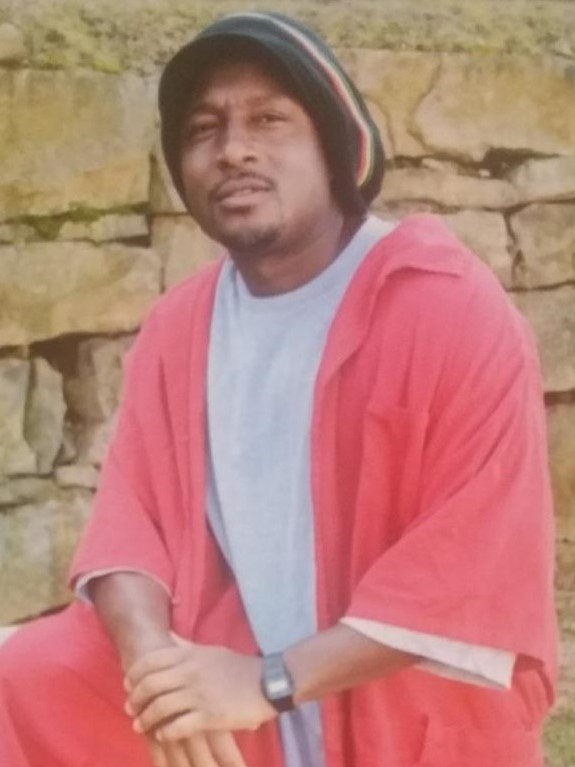
The individuals who had a hand in restarting the federal death machine would obtain the best legal representation available in a criminal case – because they have the means to do that. But – what about those who are a minority? What about those who are black and convicted in a southern state with all that we know goes hand in hand with that? What about those whose attorneys are appointed by the Court? There is an enormous difference between an attorney that is shopped for and one that is operating under a set fee by the courts while also carrying paying clients. If an attorney has paying clients – the court appointed cases go to the bottom of the stack. That’s reality.
Terry Robinson has so much character it can’t be covered up with a red Death Row jumpsuit. Mr. Robinson writes under the pen name Chanton. His essay, ‘Being Better’, which he wrote earlier this year, speaks of accidentally stealing forty dollars nearly two decades ago – and how he was driven to confess that mistake. ‘Duck’, Chanton, Terry, Mr. Robinson – is ‘collateral damage’.
It’s okay to say it – you are innocent. You have every right to say it. You are not the first person to be incarcerated for something you didn’t do. You are not the first person on Death Row to know you don’t belong there. There are other people who know you don’t belong there. Your previous mistakes in life don’t make you deserving of this. The loss that is the reason for this discussion is not diminished by you speaking truth. Truth is never a mistake. And the truth is – some innocent people live on death row, and may very well die there.
Mr. Robinson can be contacted at:
Terry Robinson #0349019
Central Prison
4285 Mail Service Center
Raleigh, NC 27699-4285
Anybody with information related to his case can contact me at kimberleycarter@verizon.net. Anything you share with me will be confidential.
![]()

“Acts of kindness come few and far between for me, but I’ve adopted a point of view that dictates – when an act of kindness is bestowed upon you, the most meaningful thing you can do in return is pay it forward. And, so I shall. So, however big or small the gesture turns out to be, together we will contribute to what I suppose could be considered the Universal Good.” – Wilmer Portillo
I am so grateful for the chance I have every day to work with the most appreciative people I know. It’s a gift. Kindness and compassion and love – change people and the world. Vengeance in the form of the death penalty, solitary confinement and overly harsh sentences in inhuman conditions – don’t make us better.
“You’ve taken up the fight to save my life like no other has done – and I never asked you to do it. You did this on your own, and that warms my heart.” – anonymous
Happy Thanksgiving!
NOTE: Wilmer A Portillo is a gifted writer and the author of A Dreamer’s Story. He can be contacted at:
Wilmer Portillo #01356973
McConnell
3001 South Emily Drive
Beeville, TX 78102
![]()
 I’ve spent almost half my life here. During that time, I’ve done everything possible to return home – to leave this place and return to society. I’ve abandoned fear, anger, bad feelings, all in search of the way – my own walk.
I’ve spent almost half my life here. During that time, I’ve done everything possible to return home – to leave this place and return to society. I’ve abandoned fear, anger, bad feelings, all in search of the way – my own walk.
It’s not necessarily a religious or spiritual walk, although I believe in God and the Bible and wish I were more pious and connected. I strive for that every day. I realize that God is responsible for every single person in my life at this moment, and for that, I feel blessed. I’ve never felt as connected to the world in which I hope to return some day. I’ve made friends, and some are like family.
When I came to prison though, I lost everyone I ever cared about and loved. I think that happens to a lot of people here. It’s taken twenty-three years to build bridges back to my former life. Those bridges may be fewer, but they are sturdier and more structurally sound than they were before. I hope to walk across them some day.
I believe that is the point of incarceration. There are a lot of things wrong here, but the time here has gotten me to this place. It wasn’t just prison though. I’ve had the help of advocacy groups. Most of those are made up of individuals concerned about the welfare and treatment of prisoners, and they give and give and give until they cannot give any longer – and then they still give.
They want change. They are tireless. They don’t ask me or those they help to explain what they have done to get here. We know what we have done to get here. They show us how forgiveness can heal. They help us forgive ourselves. They help us see we have value and potential. They let us know we are worthy of care. They change our lives. The good ones – they just care. They care and expect nothing in return. They walk beside us while we try to come to terms with what we have done to get here. Or – for others – while they come to terms with being wrongly convicted or overly sentenced.
And when we do walk across the bridges we try to build while we are here, we do it with all those who helped us along the way.
Anybody who knows me, knows I don’t write to bring attention to myself. I don’t consider myself an expert on anything except my own personal experiences. I write to bring attention to the circumstances here, so others who aren’t able to write will be heard. I write hoping to have a hand in ending their pain and suffering.
I don’t write to make a fortune. I don’t write to be rich in wealth and prosperity. I write to be rich in the comfort and well being of others. I’ve taken a page from the book of those advocates who have spoken for me.
I live in a Texas prison where many say they send the old and sick inmates to die. It’s what some might call a prison nursing home, but nothing like a free world nursing home. It is for these folks I write. I write for change. I write for justice. I write for love.
Not all advocacy groups are the same. I’ve experienced that personally, but I’m grateful to those that have helped me get to this spot in my walk.
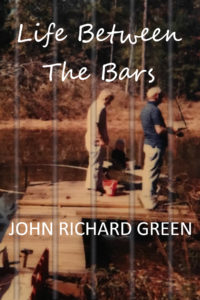 ABOUT THE AUTHOR. Shipwrecked and found. John is currently doing a two-year set off, after 25 years of incarceration. He is a frequent contributor as well as the author of Life Between The Bars, a unique and heartwarming memoir. John can be contacted at:
ABOUT THE AUTHOR. Shipwrecked and found. John is currently doing a two-year set off, after 25 years of incarceration. He is a frequent contributor as well as the author of Life Between The Bars, a unique and heartwarming memoir. John can be contacted at:
John Green #671771
C.T. Terrell Unit A150
1300 FM655
Rosharon, TX 77583
![]()
People sometimes look at you funny when they hear you are an advocate for the incarcerated. Less often, some begin a debate about the need for fire and brimstone.
Advocates don’t have time to get caught up in a debate. Nobody will ever convince us caring about people is a mistake. Those who stick with it – use the debates, the occasional ugly comments, the injustice we see – as inspiration.
Marianne Teresa Ruud is an English teacher in Norway and someone who cares. This is why she does what she does…
 A week before Christmas, 2013, one of my female students lost her fifteen year old brother to suicide. He had been bullied through elementary and middle school and decided he didn’t want to live anymore. My student, along with her family, found him dead in his bed – no note, no explanation. Just gone.
A week before Christmas, 2013, one of my female students lost her fifteen year old brother to suicide. He had been bullied through elementary and middle school and decided he didn’t want to live anymore. My student, along with her family, found him dead in his bed – no note, no explanation. Just gone.
She was devastated and didn’t know how she was going to get through the rest of the school year. Other teachers kept telling me not to bring up her loss, not to talk about it. On the contrary, I knew this was what we had to do. It had to be addressed, not quietly hidden away.
That’s when we came across the documentary, Young Kids Hard Time, by Calamari Productions. The students expressed a great desire to write to the two individuals in the movie, Colt Lundy and Miles Folsom. The letters the students received in return not only contained the prisoners’ stories, but also poems they had composed, reflections on books they had read and some very beautiful artwork. The letter writing developed on its own over time, giving us knowledge and insight.
We are now in touch with many intelligent and talented young people on the inside. It has motivated students to reflect and ponder on their own lives, as the people on the inside have helped them put into words the emotions and burdens they carry. The project has been most successful with at risk students, those with special needs and our advanced students who seek more knowledge and opportunities to obtain it.
For the past five years my students at Nannestad videregående skole (upper secondary school) in Norway, have continued to write and receive letters from incarcerated individuals, all juveniles sentenced to life and life without the possibility of parole from all over the United States of America. Their ages differ as some of them who were sentenced as thirteen and fourteen years old are now in their thirties. The youngest individual we worked with was sentenced when he was twelve. Others have only been in prison for seven to ten years. A few of them are intellectually disabled and others were sentenced not knowing how to read or write. Their crimes vary from parricide, to robbery and felony murder. Most of them are victims of abuse, poverty, neglect, social violence and drug use. For the moment we are only writing to males, however, we will be expanding our project to include females.
Over the years we produced a full album of music, composed to selected poems we received. This was done by our media and communication students. There is also an extensive project looking at food waste and food corruption that was carried out in cooperation with some of the individuals, as prison food is of a very low standard and private companies supplying food to prisons are not serving proper portions and nourishing diets. We have also researched various topics together, especially with those individuals getting their high school diplomas and those pursuing a higher education.
Greetings from Norway,
Marianne Ruud, English Teacher
In October of 2017, Part I and Part II of a report were aired in South Bend, Indiana, sharing how Marianne Ruud and her students began their interaction with Colt Lundy.
Marianne said something in that report that I liked. She expressed that Colt Lundy needed to have people in his life with his best interests at heart.
If we all had each other’s best interests at heart the world be a much different place.
![]()